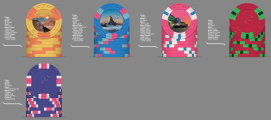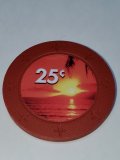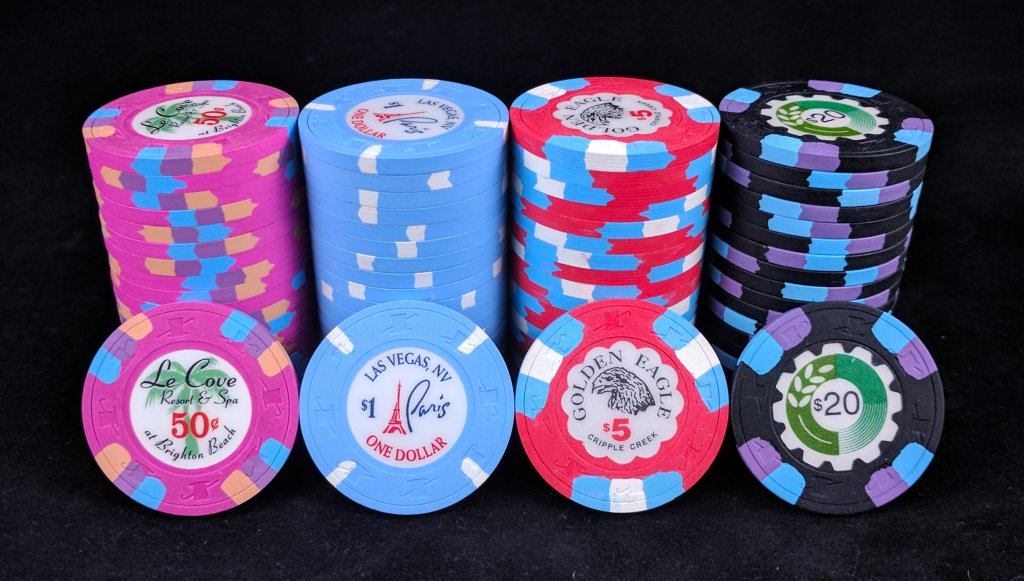EvelcyclopS
High Hand
Hello all, I'm new here, I've been lurking for some weeks as I've ramped up some efforts to fulfill a more than decade long ambition of having a genuine custom set of chips.
Theme follows an idea of sunsets - i'm into a tonne of things, but nothing that would make sense to build a set of chips off, apart from a love of a good sunset. So I matched this up with my love for travel, and built an idea to base my chips on sunsets I've seen in my travels and squeezing in some of my hobbies (e.g. the paraglider in the yellow chip). I'm still working on the inlays, but with the travel inspiration, i'm trying to style the inlays off art deco style travel posters. Current name is 'Sunset Club', however i'm not 100% sold on that. Was thinking 'sunset stakes', or 'the sunset' etc, but you guys might have some nice ideas.
The Denoms i was thinking are as follows, planning to play between 10c/10c and up to 10c/25c:
100: 10c (Yellow)
200: 25c (Blue)
200: $1 (Pink)
80: $5 (Red)
20: $25 (Purple)
Since my name begins with A i was thinking of going A-mold, but quite like the H-Mold and heard that circle-square has a great feel. I was hoping to get a sample set at least for colours, but not planning on buying barrels to test for feel. Anyway, nice to meet y'all and let me know what you think
Theme follows an idea of sunsets - i'm into a tonne of things, but nothing that would make sense to build a set of chips off, apart from a love of a good sunset. So I matched this up with my love for travel, and built an idea to base my chips on sunsets I've seen in my travels and squeezing in some of my hobbies (e.g. the paraglider in the yellow chip). I'm still working on the inlays, but with the travel inspiration, i'm trying to style the inlays off art deco style travel posters. Current name is 'Sunset Club', however i'm not 100% sold on that. Was thinking 'sunset stakes', or 'the sunset' etc, but you guys might have some nice ideas.
The Denoms i was thinking are as follows, planning to play between 10c/10c and up to 10c/25c:
100: 10c (Yellow)
200: 25c (Blue)
200: $1 (Pink)
80: $5 (Red)
20: $25 (Purple)
Since my name begins with A i was thinking of going A-mold, but quite like the H-Mold and heard that circle-square has a great feel. I was hoping to get a sample set at least for colours, but not planning on buying barrels to test for feel. Anyway, nice to meet y'all and let me know what you think



